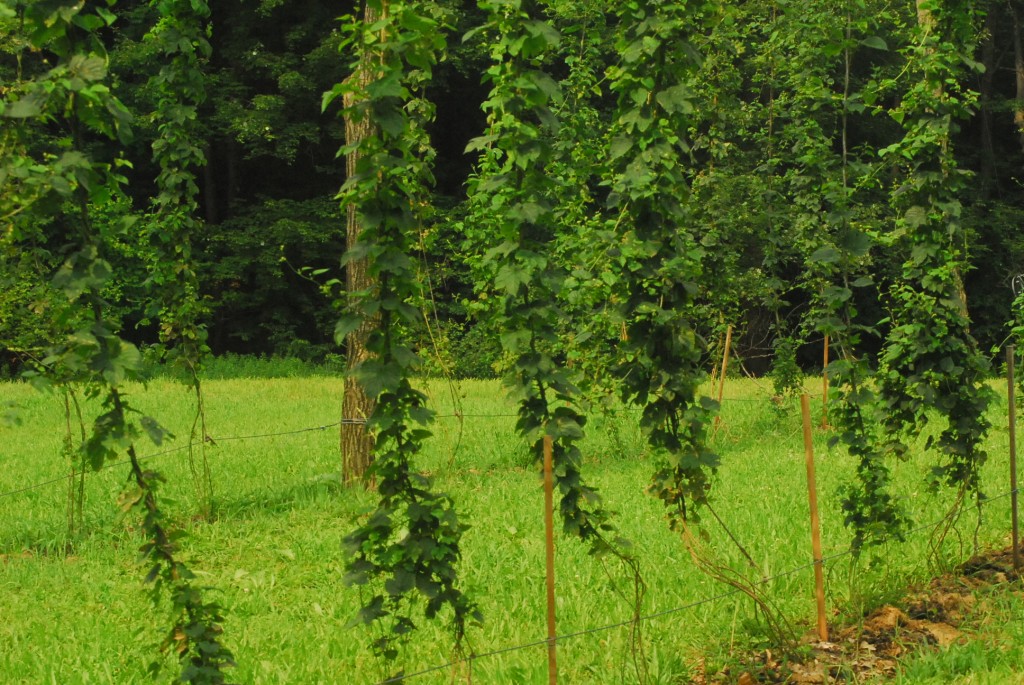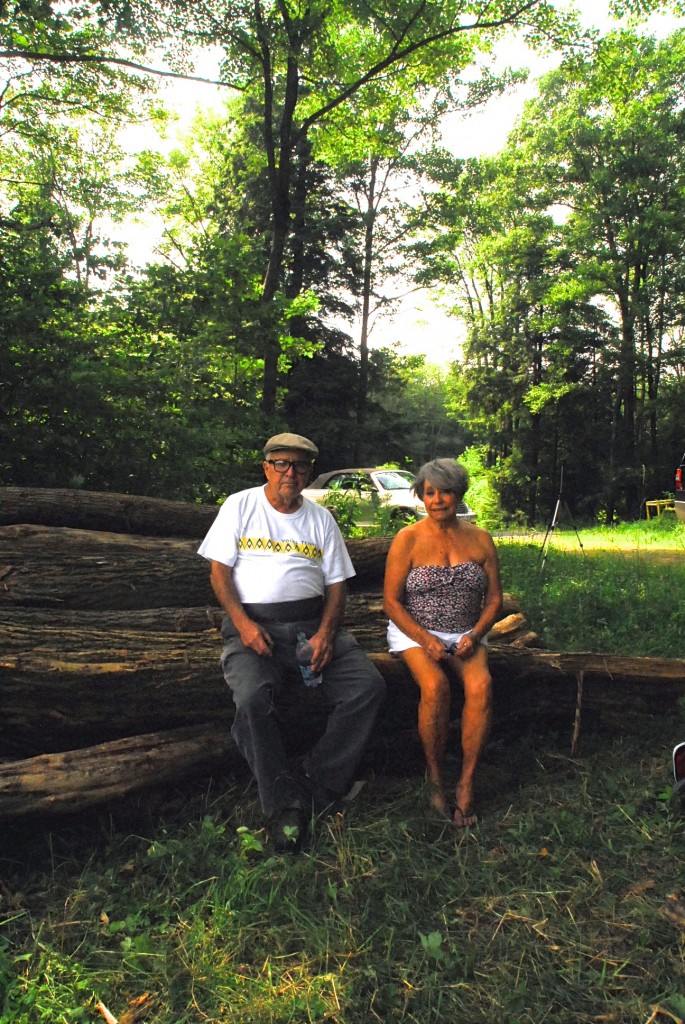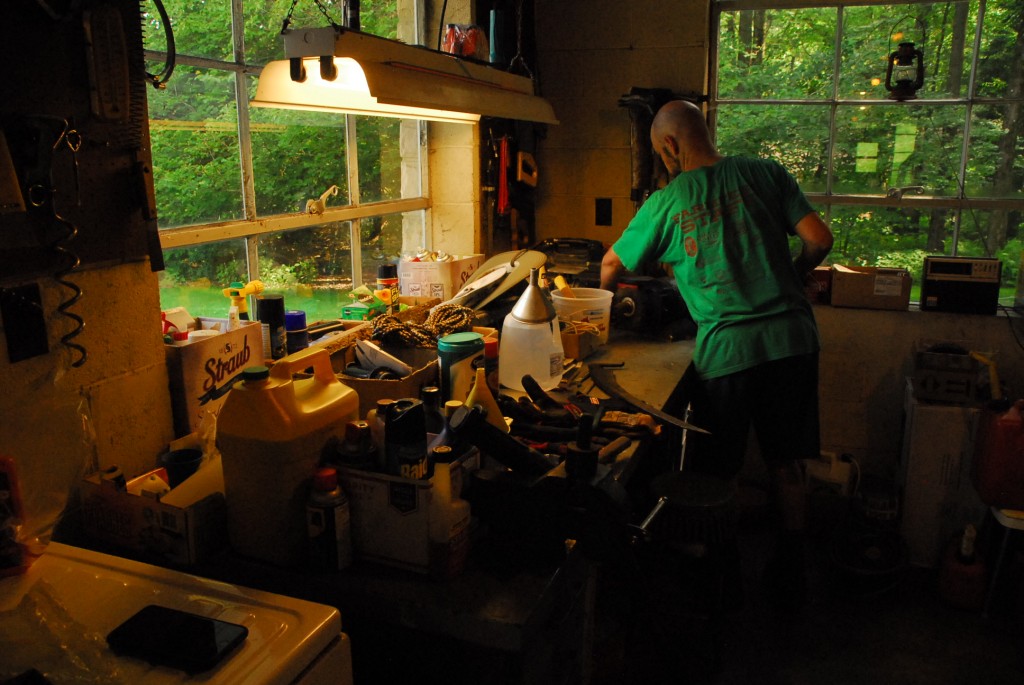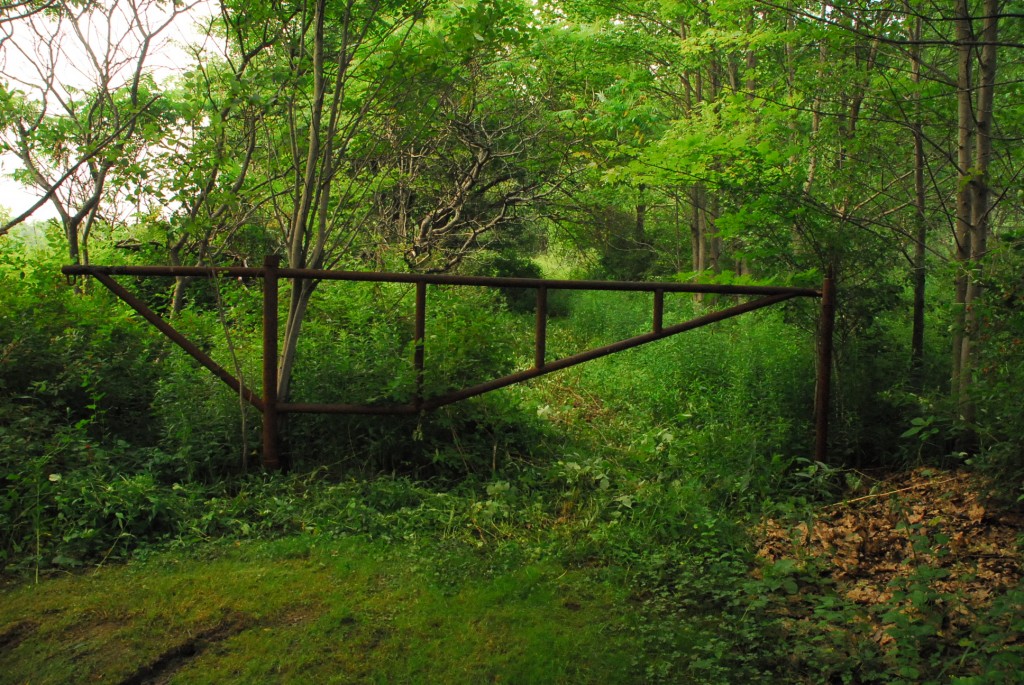A Certified Naturally Grown Farm - Saint Marys, Pennsylvania
As With All Things In Life, “Live & Learn!”

Being only our second year as hops Farmers, we learn things…the hard way..quite often.
Case in point, our addition of the new irrigation cable in the hopyard. Actually it wasn’t this concept of using an additional raised cable to support our irrigation line that failed, it was the way I implemented it…specifically that I connected the coir to it vs. running the coir all the way down to the hops as we did last year. I’d seen some hops Farms not only using this lower cable to attach drip tape directly to it, but also to attach the coir the hops bines would grow on. Not a good idea…period.
Doing so I discovered rather quickly that with the high winds we get in the yard, which are a good thing, not having the coir staked securely into the ground but rather attached to a cable that created slack and allowed the bines to bend and elongate at the base, created many issues. In one instance right before harvest, it created such an enormous amount of slack in the bines that it snapped them in the wind and killed the bines and the hops growing on those bines.
If you look closely at the bottom of the bines, where they are trimmed up from the bed (again, this is to allow for more airflow in the yard and keep any moisture or splashing off the leaves) many of those bines are stretched, curved or twisted. I attempted to tighten both the irrigation cable line and each bine’s coir, but in many instances the damage was done. Next year I will use the irrigation cable to secure the drip tape to it, but run the coir past it so it’s connected only to the taut top wire and then staked taut into the ground, giving the bine a stable line to grow on. Lesson learned!
As was the case with most of my Mondays at the Farm, my mornings were filled with work in the existing hopyard; weeding, trimming, spraying, mowing. In the afternoon, my Dad and I would head up to the new hopyard and debark poles…yes, it’s exciting as it sounds! 😉 Some days we’d crank the 4-6, other days less…depended on the pole and the condition of the bark. Either way, it was time well spent with my Dad.
On this day, as often happened Mom would swing up in the car to see how things were going. 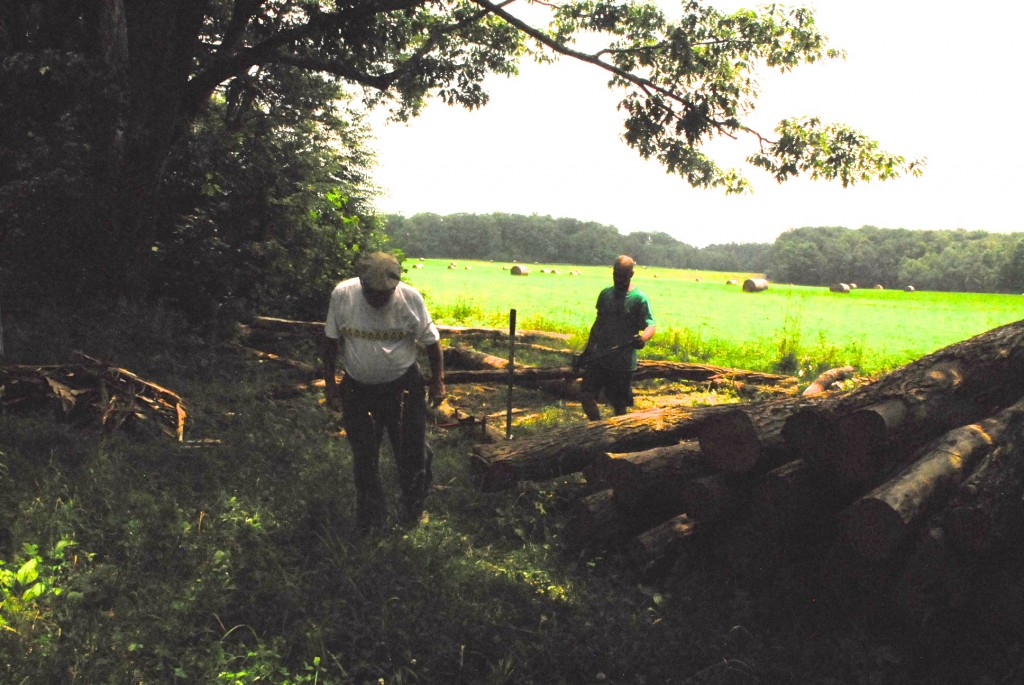
Some days were easier than others, this day things were about average. On the far left you can see the number of poles we’d completed..yup, not many. On the right, the “to-do” pile. To the left of the standing cant hook, you’ll see the peavey I’d mentioned in an earlier blog post. It allowed us to not only roll the logs but prop them up so it was easier to work on them.
You’ll see I’m also carrying a sledge hammer. The process went like this:
- Using the peavey and cant hook, roll the next pole into place propped up on 3 horizontal logs
- Smack the log using the sledge to break the seal between the bark and the inner pole
- Using the bark spud, wedge underneath the bark and in sheets, strip the bark
- If the spud didn’t work by itself, we used a drawknife to strip the bark
- Repeat 45 more times 😉
Here I am with the blade off the scythe. That tool hadn’t been used in decades so it’s needed a little TLC. In addition to sharpening with our electric sharpener, Tom Carey also allowed me to borrow his peening jig. Peening helps to reform and reshape the blade itself. Over time with thick plant stock, rocks and other hard objects while using the scythe, the blade can become not only dull but damaged and misshapen.
Here it is…the Old Keystone Road. You’ll see the path I made with the scythe, honestly rather easily with minimal effort. Folks think a tool like the scythe isn’t as efficient or effective as say a weed wacker, but it totally is AND no noise (other than the “swish!” of the blade through the grass and my breathing) or pollution. I’ll come back to this section of the road as often as I can until I complete the section that leads to the woods above where there will be more chainsaw work than anything.
If you care to, read up on Wendell Berry’s commentary on using a scythe, here’s a snippet…
“The Marugg grass scythe proves itself an excellent tool. It is the most satisfying hand tool that I have ever used. In tough grass it cuts a little less uniformly than the power scythe. In all other ways, in my opinion, it is a better tool because, it is light, it handles gracefully & comfortably even on steep ground, it is far less dangerous, it is quiet & makes no fumes, it is much more adaptable. In rank growth one narrows the cut & shortens the stroke. It always starts – provided the user will start. Aside from reasonable skill & care in use, there are no maintenance problems. It requires no fuel or oil. It runs on breakfast. It’s cheaper to buy than most weed eaters & is cheaper to use than any other power mower. And best of all it’s good exercise.”
Bang and Debark from Joshua Brock on Vimeo.
